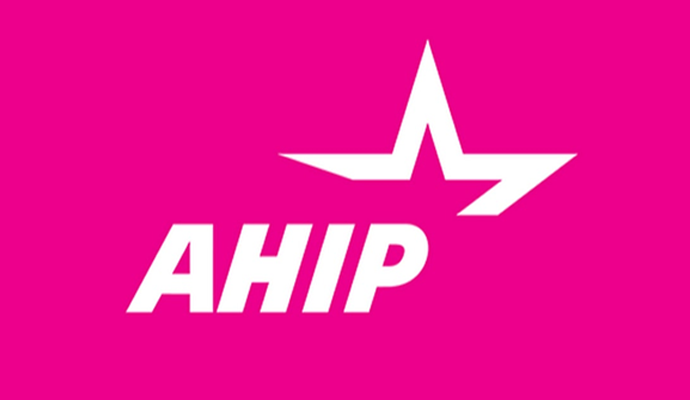Orphan Drug Act Raises Prescription Drug Spending, Needs Reworking
The Orphan Drug Act allows pharmaceutical companies to raise orphan drug prices, forcing prescription drug spending to spiral, AHIP asserts.

Source: AHIP
- The Orphan Drug Act no longer serves its original purpose but instead increases prescription drug spending and healthcare spending, American’s Health Insurance Plans (AHIP) stated in a recent report.
“Every patient deserves to get the medications they need at a cost they can afford, but drug makers are gaming well-intentioned legislation to generate outsized profits from drugs intended to treat a small population of patients with rare diseases,” said Matt Eyles, president and CEO of AHIP.
The Orphan Drug Act, enacted in 1998, originally aimed to increase pharmaceutical companies’ incentive to make drugs for rare diseases with a small market of under 200,000 patients.
The bill gives the new orphan drug seven years of protection from market competition. It grants a tax credit of 50 percent to cover the clinical testing costs. Lastly, the Orphan Drug Act eliminates the New Drug Application fee for new orphan drugs.
Orphan drugs’ annual share of new drug approvals, high launch costs and ever-rising prices post-launch, and their non-orphan indications and large consumer population all indicate that the Orphan Drug Act is not fulfilling its original purpose, AHIP argued. It again called on policymakers to revise the law.
READ MORE: Hospital-Administered Medication Boosts Healthcare Spending
Orphan drugs’ share of new drug approvals has increased to over four times its 1998 market share. In 1998, 10 percent of new drug approvals were orphan drugs. But in 2017, new orphan drugs accounted for 44 percent of approvals.
Prescription drugs’ approvals are inversely related to orphan drugs. As the new orphan drug approvals increase, prescription drugs’ approvals decrease. In 2017, prescription drugs claimed 20 percent of the approvals, a decrease of 45 percent over 19 years.
By splitting that timeframe into two decades (1998 to 2007 and 2008 to 2017), the rapidity of this shift becomes clearer. In the first half of the study’s timeframe, new orphan drug approvals rose by 23 percent, but in the second half they rose again by 43 percent.
AHIP argued that orphan drugs’ pricing propels prescription drugs’ pricing, and by extension prescription drug spending, to keep up.
Whereas the annual drug costs for prescription and specialty drugs in 2017 were about two times their price in 1998 driving up prescription drug spending, the cost for orphan drugs rose 26 times their average cost 20 years ago. Splitting the timeframe into halves, orphan drugs’ annual cost doubled from the first decade to the second.
READ MORE: How Health Policy is Working to Reduce Medicare Drug Spending
As one of the top ten most commonly prescribed Medicare Part D treatments in 2017, cancer drugs were also responsible for most of the increase in new orphan drug approvals. These drugs accounted for 35 percent of approvals in the first decade and 48 percent in the second decade. Removing cancer drugs from the analysis, orphan drugs contributed 16 percent of the new drug approvals from 1998 to 2007, and 27 percent of drug approvals from 2008 to 2017.
AHIP also pointed out that designated orphan drugs also serve common diseases, not just rare diseases, arguing that this proves the Orphan Drug Act no longer serves its original function.
Pharmaceutical companies defend the high pricing on orphan drugs by pointing to their small market. With so few people buying their product, they have to set prices high to cover production costs.
However, AHIP asserted that many orphan drugs have a larger market that does not necessitate high prices to cover costs. Some orphan drugs treat diseases that cannot be categorized as “rare,” a stipulation to qualify as an orphan drug. Additionally, many orphan drugs can be used off-label for non-rare diseases, which could mean the drugs have a larger market that is not being accounted for.
If the orphan drugs’ market is larger than pharmaceutical companies claim, then the drugmakers are receiving benefits of making orphan drugs – tax credits, new drug application waivers, and market exclusivity, which are intended to cover the costs of making the drugs – while making a significant profit due to high pricing and a large market, AHIP said.
READ MORE: IL Payers File Pharma Lawsuit Over Opioid Prescription Costs, Safety
AHIP referenced a previous study to argue that most of the orphan drugs’ revenues are from patients that use the drugs as non-orphan and off-label treatments.
“Lawmakers must ensure that the Act serves its original purpose to incentivize the development of treatments for rare diseases – not as a gateway to premium pricing and blockbuster sales beyond orphan indications,” AHIP urged.
“Now more than ever we need lawmakers to revisit the Orphan Drug Act,” Eyles added. “We must balance the incentives to develop new treatments for rare diseases while preventing drug makers from exploiting the system with launch prices that defy gravity, blocking competition, and increasing their prices on the same products year after year.”
